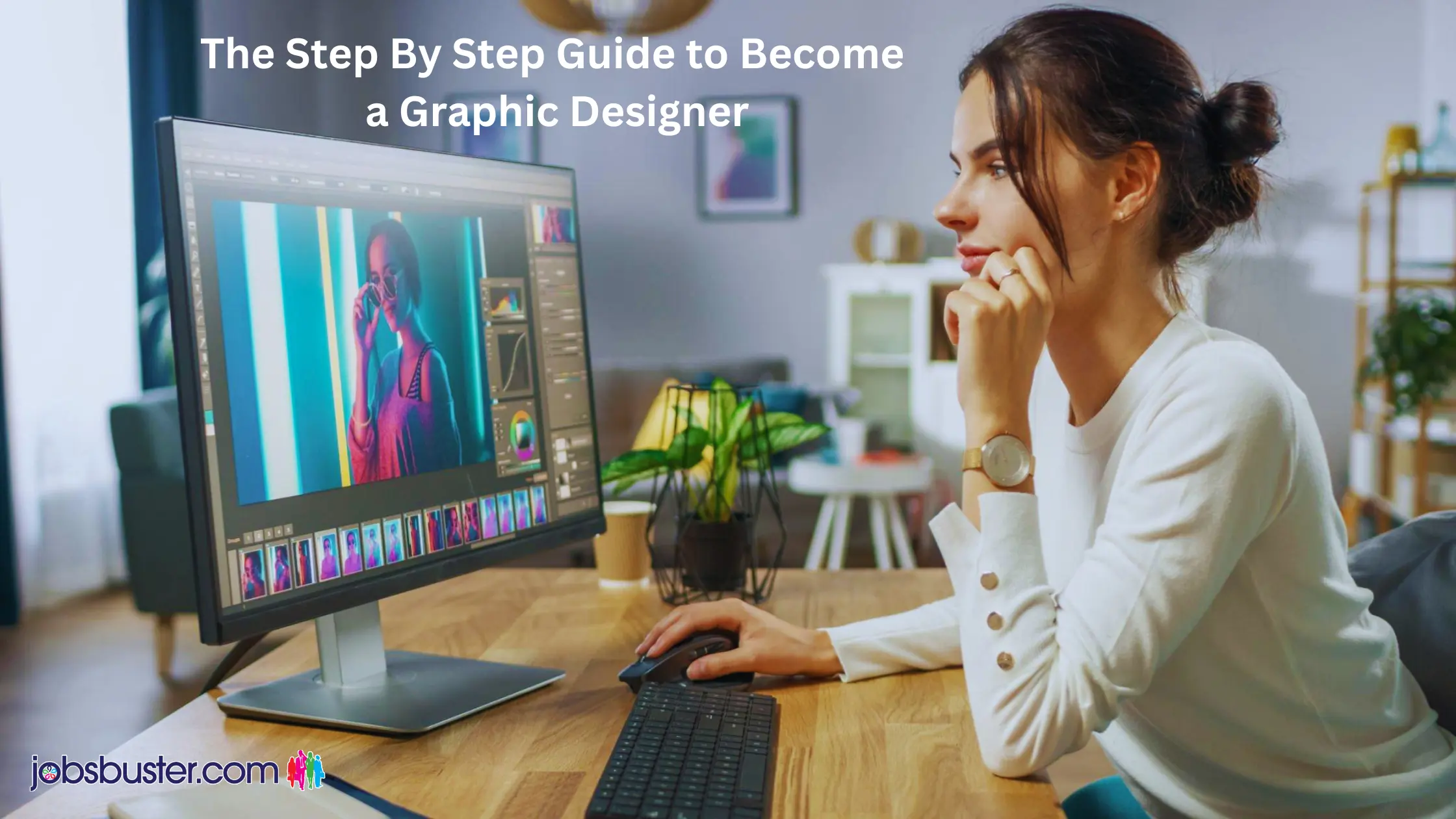
Graphic design is a dynamic and creative field that plays a crucial role in today’s visually driven world. If you have a passion for art, an eye for aesthetics, and a desire to communicate through visuals, a career as a graphic designer might be the perfect fit for you. In this comprehensive guide, we will take you through the step-by-step journey of becoming a graphic designer, from understanding the basics to thriving in the industry.
What Is Graphic design?
Before diving into the world of graphic design, it’s essential to grasp the fundamental concept of what graphic design is and what graphic designers do.
Graphic design is the art of visual communication that involves creating and combining text, images, and other visual elements to convey a message or evoke an emotional response. Graphic designers work on a wide range of projects, including logo design, website layouts, marketing materials, posters, and more. They aim to create visually appealing and effective designs that resonate with their target audience.
Graphic Designer Skills
To become a successful graphic designer, you need to develop a diverse set of graphic designer skills, including:
Creativity: The ability to think outside the box and come up with innovative design solutions is crucial.
Typography: Understanding how to use fonts effectively and aesthetically is essential for creating impactful designs.
Color Theory: Knowing how to choose and combine colors harmoniously is key to creating visually pleasing designs.
Layout and Composition: Learning how to arrange elements on a page or screen for maximum impact and readability.
Digital Tools: Proficiency in graphic design software such as Adobe Illustrator, Photoshop, and InDesign.
Attention to Detail: Graphic designers must be meticulous to ensure their work is error-free and pixel-perfect.
Education and Training
While some graphic designers are self-taught, formal education can provide a solid foundation for your career. Consider pursuing a degree in graphic design, visual communication, or a related field from a reputable institution. Alternatively, you can opt for online courses, workshops, or tutorials to acquire the necessary skills.
Building a Strong Portfolio
Your portfolio is your calling card in the graphic design industry. It showcases your skills, creativity, and versatility to potential clients or employers. Start by creating a diverse collection of your best work, including personal projects and assignments from your education or training. Your portfolio should reflect your growth as a designer and demonstrate your ability to tackle various design challenges.
Gaining Practical Experience
To gain practical experience, consider internships, freelance career, or volunteer opportunities. Real-world projects allow you to apply your skills, learn from professionals, and build a network in the industry. Be open to feedback and use these experiences to enhance your portfolio.
Finding Your Niche
Graphic design encompasses various niches, such as branding, web design, illustration, packaging, and more. Identifying your niche can help you specialize and stand out in a competitive field. Explore different areas of graphic design to discover where your passion and talents align.
Learn the Principles of User Experience
As a graphic designer, you’ll often be involved in creating user interfaces and web designs. Understanding the principles of user experience (UX) is crucial. Study how users interact with websites and apps, learn about wireframing and prototyping, and stay updated on UX best practices.
Mastering Essential Tools
Graphic designers rely heavily on software tools. Familiarize yourself with industry-standard software like Adobe Creative Cloud (Illustrator, Photoshop, InDesign), CorelDRAW, or other relevant tools for your niche. Continuous practice and learning are essential to stay proficient with these tools.
Networking and Building a Personal Brand
Networking is vital in the graphic design industry. Attend industry events, join professional organizations, and connect with fellow designers, clients, and mentors. Building a personal brand through an online portfolio, social media presence, and a professional website can help you showcase your work and attract clients or job opportunities.
Job Hunting and Freelancing
Whether you’re seeking full-time employment or pursuing freelance opportunities, graphic design Jobs requires a strategic approach. Create a compelling resume and cover letter, tailor your portfolio to the job you’re applying for, and prepare for interviews that may include design challenges. If freelancing, set clear rates, contracts, and boundaries with clients to ensure a successful working relationship.
If you are in search of the jobs, you can visit the platform- Jobsbuster, you will find various Uk jobs opportunities.
Staying Updated and Evolving
Graphic design is an ever-evolving field. Stay updated with the latest design trends, techniques, and technology. Attend workshops, webinars, and conferences to continue learning and improving your skills. Adaptability is key to thriving in the industry.
Read Also: High-Demand Part-Time Jobs in Today’s UK Job Market
Conclusion
Becoming a graphic designer is a rewarding journey that offers countless opportunities for creativity and self-expression. By understanding the fundamentals, developing your skills, building a strong portfolio, gaining practical experience, and continuously learning, you can embark on a successful career in graphic design. Remember, success in this field often requires patience, persistence, and a genuine passion for design. So, take the first step, and let your creativity flourish in the world of graphic design.
Comments (1)
www.binance.com Pag-sign up
Thanks for sharing. I read many of your blog posts, cool, your blog is very good.